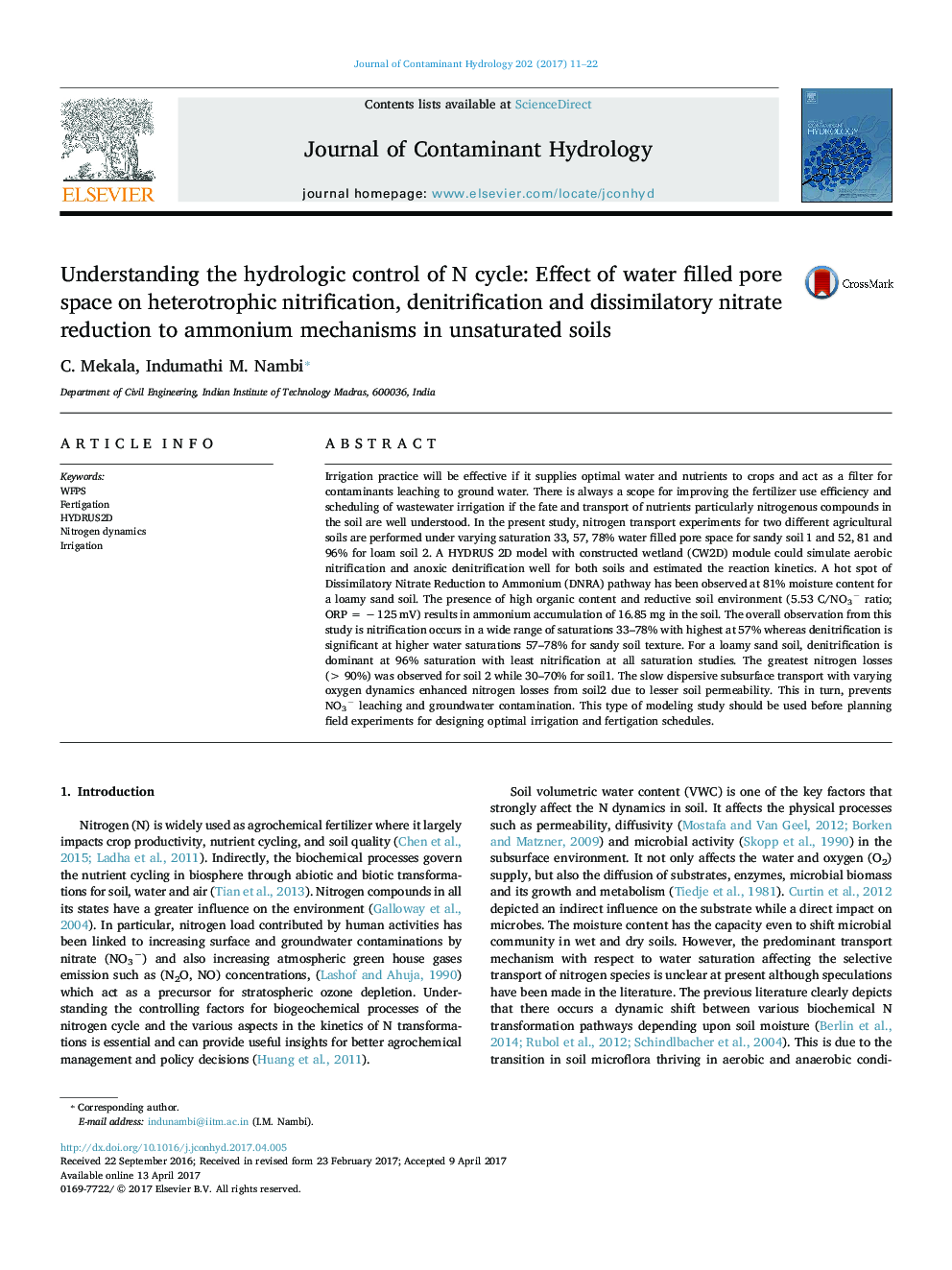| کد مقاله | کد نشریه | سال انتشار | مقاله انگلیسی | نسخه تمام متن |
|---|---|---|---|---|
| 5765832 | 1627009 | 2017 | 12 صفحه PDF | دانلود رایگان |

- Effect of water saturation and soil type on N bio-geotransformations were addressed
- Sandy soil exhibited heterotrophic nitrification in the range 33 to 78% saturation
- Denitrification occurred at higher soil moisture (> 90%) in sandy and loamy soils
- DNRA, a major NO3- sink occurred at 81% WFPS in loamy soil
- Oxygen dynamics of loam soil favored more N loss (>Â 90%) than sandy soil (30-70%)
Irrigation practice will be effective if it supplies optimal water and nutrients to crops and act as a filter for contaminants leaching to ground water. There is always a scope for improving the fertilizer use efficiency and scheduling of wastewater irrigation if the fate and transport of nutrients particularly nitrogenous compounds in the soil are well understood. In the present study, nitrogen transport experiments for two different agricultural soils are performed under varying saturation 33, 57, 78% water filled pore space for sandy soil 1 and 52, 81 and 96% for loam soil 2. A HYDRUS 2D model with constructed wetland (CW2D) module could simulate aerobic nitrification and anoxic denitrification well for both soils and estimated the reaction kinetics. A hot spot of Dissimilatory Nitrate Reduction to Ammonium (DNRA) pathway has been observed at 81% moisture content for a loamy sand soil. The presence of high organic content and reductive soil environment (5.53 C/NO3â ratio; ORP = â 125 mV) results in ammonium accumulation of 16.85 mg in the soil. The overall observation from this study is nitrification occurs in a wide range of saturations 33-78% with highest at 57% whereas denitrification is significant at higher water saturations 57-78% for sandy soil texture. For a loamy sand soil, denitrification is dominant at 96% saturation with least nitrification at all saturation studies. The greatest nitrogen losses (> 90%) was observed for soil 2 while 30-70% for soil1. The slow dispersive subsurface transport with varying oxygen dynamics enhanced nitrogen losses from soil2 due to lesser soil permeability. This in turn, prevents NO3â leaching and groundwater contamination. This type of modeling study should be used before planning field experiments for designing optimal irrigation and fertigation schedules.
156
Journal: Journal of Contaminant Hydrology - Volume 202, July 2017, Pages 11-22